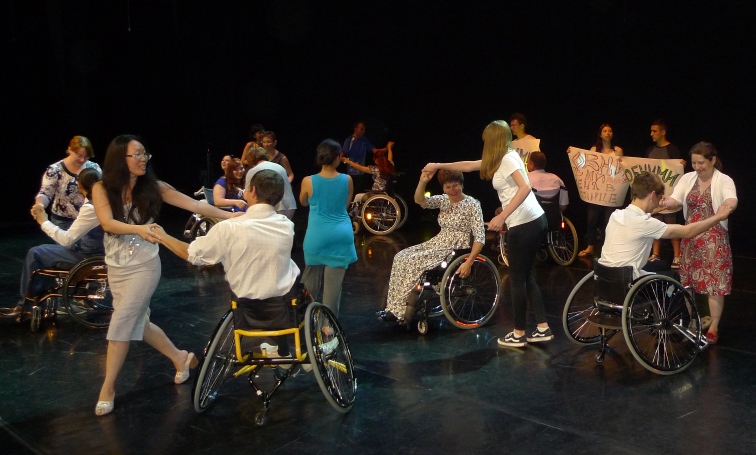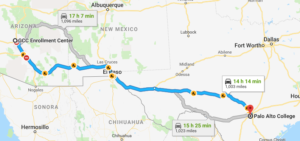I attended a webinar with the same title as this post. The webinar was hosted by Maryellen Weimer, the long-time editor of The Teaching Professor. She garnered the information for the presentation based on years of editing best practices in higher education andragogy. The title of this webinar caught my attention. Of course, I had to know if I was making any of the three worst mistakes. To get straight to the point, here are the three worst mistakes. 1) Letting content dictate instructional decision-making. 2) Making decisions about who can and cannot learn. 3) Instructional experience is the best the best teacher.
For as interesting as all three are, mistake #1 is the one which challenges me and interests me the most. The presenter indicated that faculty are so focused on covering so much content, and covering it so thoroughly, that they are missing opportunities for instructional design that could increase strategies for more and better learning. The presenter referenced a study by Bacon and Stewart (2006) titled How Fast Do Students Forget What They Learned in Consumer Behavior?: A Longitudinal Study. The study tracked an upper level consumer behavior course and determined that every student in the class had forgotten all the information from the course within two years. What?! My first reaction is “Why are we wasting our time as educators?” If everything we teach is soon forgotten, what is the purpose of education? What is the purpose of our profession? The presenter did go on to stress that she is not suggesting abandoning the teaching of content based on this one study. But she did advocate not being too bogged down by content that we, as educators, miss opportunities for spontaneous learning opportunities. For instance, if a student asks a question about something related to the current topic but the question is off course a bit, does the instructor address the question or tell the student that the topic is for a future conversation. The content-driven instructor will avoid the question and focus on the content of the day. An instructor not so driven by content will use the opportunity to promote important lessons about learning such as critical-thinking and problem-solving. They will use the content versus cover the content.
When I heard the presenter mention that faculty should use content to promote critical-thinking, decision-making, and problem-solving skills, I could not help but think about two recollections from this academic year. First, at a district-wide conference designed for career and technical faculty, I had the pleasure of hearing Trevor Spokes, Workforce Programs Manager from the Arizona Department of Office of Economic Opportunity, speak. He said that the “ability to learn might be the single most critical professional skill you ever develop.” Second, Dr. Terry has been encouraging us all to read a book by Joseph Aoun called Robot-Proof. In both cases, the sources are asking us to develop skills in students that will prepare them for jobs that may not exist yet, rather than prepare them for professions that are disappearing. Aoun suggests providing skills to our students that robots cannot perform. Rather than fill students’ minds with facts, acclimate them with a creative mindset to invent and discover. To do this, students will need data literacy to manage data, technological literacy to know how the robots work, and human literacy to communicate and design. I do not disagree with either of these sources. The challenge is to determine how to develop the needed skills. I believe providing facts are building blocks from which to build the desired skills. My job is to present the building blocks and then use that content to develop the higher order skills. How do we that? I am not certain, but now I have a goal. I know my students memorize terminology. I know they regurgitate facts back to me on exams. I know, based on teaching consecutive courses, they do not retain the information. My goal is to do as Weimar suggested and turn the mistake of being content-driven into a positive and use instructional design to drive the course. My goal is to get students to take facts and critically analyze them so that those facts can become useful information to guide managerial decision-making.
” Aim not to cover the content, but to uncover part of it.” Author Unknown

 One of the many contributing factors to your self-esteem is social comparison (McCornack, 2016). Comparing ourselves to others impacts how we see ourselves. It’s our measuring stick. We use it to see how we size up against others. Social media has introduced society to the ultimate measuring stick. Every day we are inundated with posts and images of others we think are better than us, or are living the lives we want to live. Students see images of their friends graduating from universities, while they are here at the community college. Faculty see posts from colleagues who are getting published, being awarded grants, and obtaining Ph.D.’s. Staff see individuals getting promoted to higher positions in education and think to themselves, why not me? We feel like if we are not famous, or doing anything significant that is on the level of Michelle Obama or Oprah Winfrey, that we are not important, that we do not matter, and that we don’t have value or worth.
One of the many contributing factors to your self-esteem is social comparison (McCornack, 2016). Comparing ourselves to others impacts how we see ourselves. It’s our measuring stick. We use it to see how we size up against others. Social media has introduced society to the ultimate measuring stick. Every day we are inundated with posts and images of others we think are better than us, or are living the lives we want to live. Students see images of their friends graduating from universities, while they are here at the community college. Faculty see posts from colleagues who are getting published, being awarded grants, and obtaining Ph.D.’s. Staff see individuals getting promoted to higher positions in education and think to themselves, why not me? We feel like if we are not famous, or doing anything significant that is on the level of Michelle Obama or Oprah Winfrey, that we are not important, that we do not matter, and that we don’t have value or worth.

